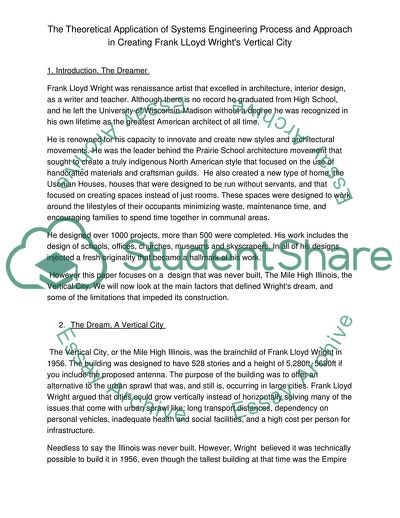Cite this document
(The Theoretical Application of Systems Engineering Process in Creating Report Example | Topics and Well Written Essays - 1750 words, n.d.)
The Theoretical Application of Systems Engineering Process in Creating Report Example | Topics and Well Written Essays - 1750 words. https://studentshare.org/engineering-and-construction/1734995-the-theoratical-application-of-systems-engineering-process-and-approach-in-creating-frank-lloyd-wrights-vertical-city
The Theoretical Application of Systems Engineering Process in Creating Report Example | Topics and Well Written Essays - 1750 words. https://studentshare.org/engineering-and-construction/1734995-the-theoratical-application-of-systems-engineering-process-and-approach-in-creating-frank-lloyd-wrights-vertical-city
(The Theoretical Application of Systems Engineering Process in Creating Report Example | Topics and Well Written Essays - 1750 Words)
The Theoretical Application of Systems Engineering Process in Creating Report Example | Topics and Well Written Essays - 1750 Words. https://studentshare.org/engineering-and-construction/1734995-the-theoratical-application-of-systems-engineering-process-and-approach-in-creating-frank-lloyd-wrights-vertical-city.
The Theoretical Application of Systems Engineering Process in Creating Report Example | Topics and Well Written Essays - 1750 Words. https://studentshare.org/engineering-and-construction/1734995-the-theoratical-application-of-systems-engineering-process-and-approach-in-creating-frank-lloyd-wrights-vertical-city.
“The Theoretical Application of Systems Engineering Process in Creating Report Example | Topics and Well Written Essays - 1750 Words”. https://studentshare.org/engineering-and-construction/1734995-the-theoratical-application-of-systems-engineering-process-and-approach-in-creating-frank-lloyd-wrights-vertical-city.


